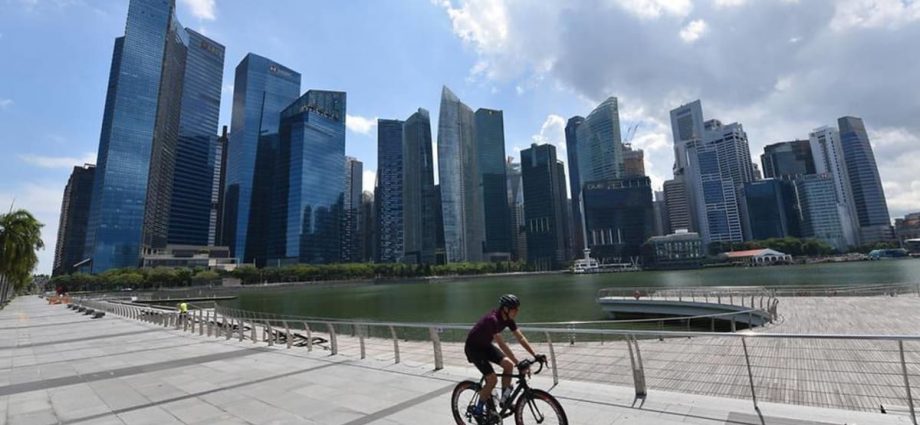
4. ADD EXTRA “BUFFER TIME” IF YOU’RE BIKE-SHARING
Like Mrs Tan, who first did a recce of her route with a rental bike, bike-sharing allows you to test the feasibility of cycling to work before investing in a bike of your own.
But my experience with bike-sharing was hit-or-miss – not every bike came with a basket, working brakes and bell, or a seat that could be adjusted. Be prepared to walk to the next nearest parking spot to hunt down a fully functioning bike.
“You need to put safety first. If not for you, then for the pedestrians,” said Mrs Tan, who has since bought her own Brompton bike.
Before setting off, make sure you have also located a legal parking spot near your office. You may need to factor in the time taken to walk from the nearest parking spot.
5. MAKE YOURSELF SEEN AND HEARD – EVEN DURING THE DAY
Once you embark on your journey, you should be seen and heard easily by pedestrians and motorists.
If you usually tote around a laptop, consider a waterproof cycling backpack with a laptop compartment – and get it in a striking palette.
Wear bright-coloured shirts too, or invest in a few solely for cycling if you prefer to keep your outfit muted at work.
“This can be especially (useful) when it gets dark, like when you’re staying late in the office,” advised Mrs Tan. But “even in the daytime”, you have to make yourself seen when you’re on the road.
This, in addition to a bell, will make you more visible on relatively crowded park connectors in the morning.
“There’s a lot of people, especially in the morning, jogging or walking and they have their (earphones). Sometimes, they think we’re going fast, but it’s just because they couldn’t hear the bell,” she said.
“Even if you ring the bell, they just won’t stay on their right. They will just stay in the middle of the (pavement).”
But Mrs Tan also acknowledged that, as she doesn’t cycle on the main roads, she just has to be more patient with such pedestrians and to always give way.
Mr Alavi, on the other hand, doesn’t believe it’s necessary to wear bright-coloured clothes as his bike has two rear blinkers and a front blinker.
He also relies on the “illuminated strips” behind his bicycle fork – the part of a bicycle that holds the front wheel – to alert drivers behind him when they reflect light at night.

